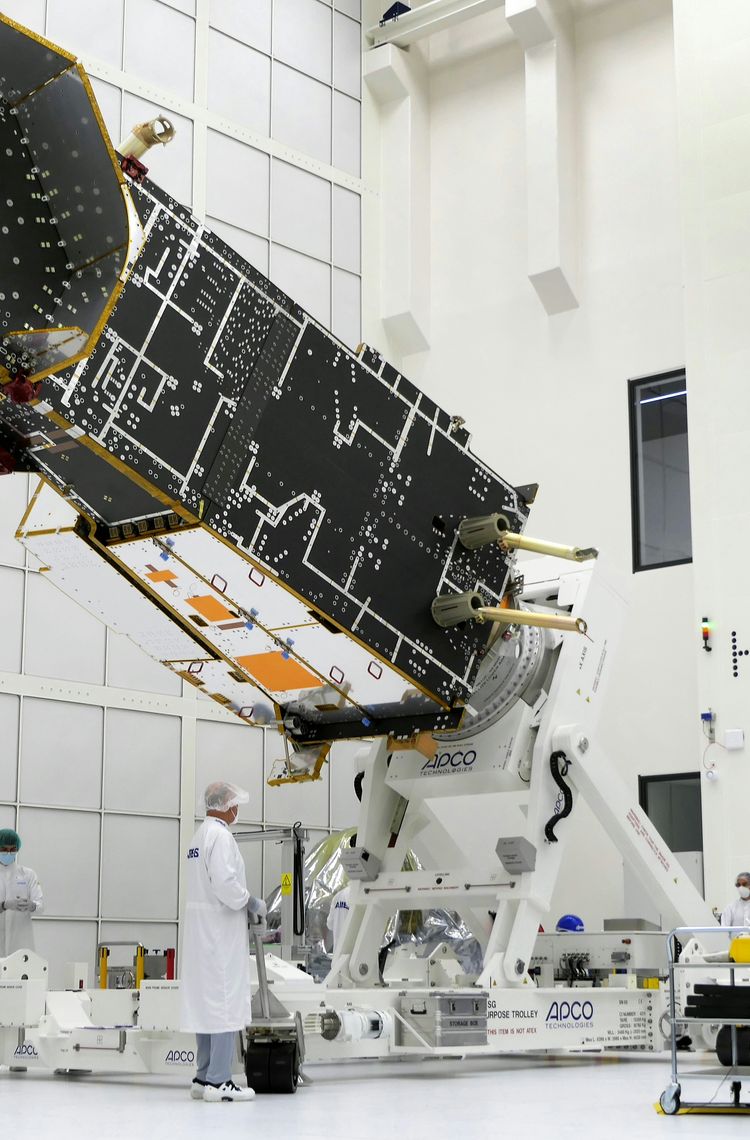After delivery of the huge satellite structure, work can begin on the first MetOp SG-B weather satellite
Friedrichshafen, 25 May 2021 - It is six metres high, more than three metres wide, and weighs just over a tonne, and it forms the backbone of the new, second generation of polar-orbiting weather satellites. The structure for the first "B" satellite of the MetOp Second Generation (MetOp-SG) series has arrived at Airbus’ satellite integration centre in Friedrichshafen (Germany). By November 2022, the satellite should be ready to be delivered for its environmental test campaign during which it will be verified under space-like conditions.
The MetOp-SG programme is being implemented by the European Space Agency in collaboration with EUMETSAT. The MetOp-SG satellite fleet consists of six satellites and will secure the continuation of meteorological observations from a polar orbit in the 2024-2045 timeframe. Comprehensive data from the suite of innovative European instruments will feed into forecasting models bringing observations to a new standard.
Numerical weather prediction at regional and global levels will benefit from the satellite programme. MetOp-SG will provide enhanced infrared, microwave, and radio-occultation soundings of temperature and humidity; polar atmospheric motion vectors extracted from optical imagery; novel precipitation and cloud measurements from imagers in the optical, sub-millimetre and microwave spectra; and high-resolution ocean surface wind-vector and soil moisture measurements extracted from scatterometer observations.
MetOp-SG comprises two series of satellites, with three units in each series. The Satellite A series carries optical instruments and atmospheric sounders, while the Satellite B series accommodates microwave instruments. Both types are based on Airbus Defence and Space’s Astrobus high-power satellite platforms. While the Satellite A series is being developed and built under the industrial lead of Airbus in Toulouse (France), the design and manufacture of the Satellite B series is led by the company’s Friedrichshafen site in Germany.
Airbus leads an industrial consortium comprising more than 110 companies in 16 European countries and Canada, to supply more than 160 different pieces of equipment and services for the satellites’ platforms and instruments.
Each satellite, with a launch mass of approximately 4 tonnes, will be launched separately. The satellites will be placed on the MetOp sun-synchronous polar orbit, at an average altitude of 831 kilometres. The nominal service life of each satellite is 7.5 years. After 7 years, the subsequent satellite of the same series will be launched, ensuring full operational coverage over a period of 21 years with a pair of A and B type satellites always in orbit.
The first launch of a MetOp-SG satellite is currently scheduled for early 2024.
@AirbusSpace @ESA_EO @eumetsat #weather #climate #MetOpSG #SpaceMatters
Your media contacts
Contact us
Mathias Pikelj
Communications - Airbus Defence & Space
Ralph Heinrich
AIRBUS | Defence and Space
Francisco Lechón
External Communications - Airbus Space Systems, Spain
Jeremy Close
AIRBUS | Defence and Space
Guilhem Boltz
AIRBUS | Defence and Space





